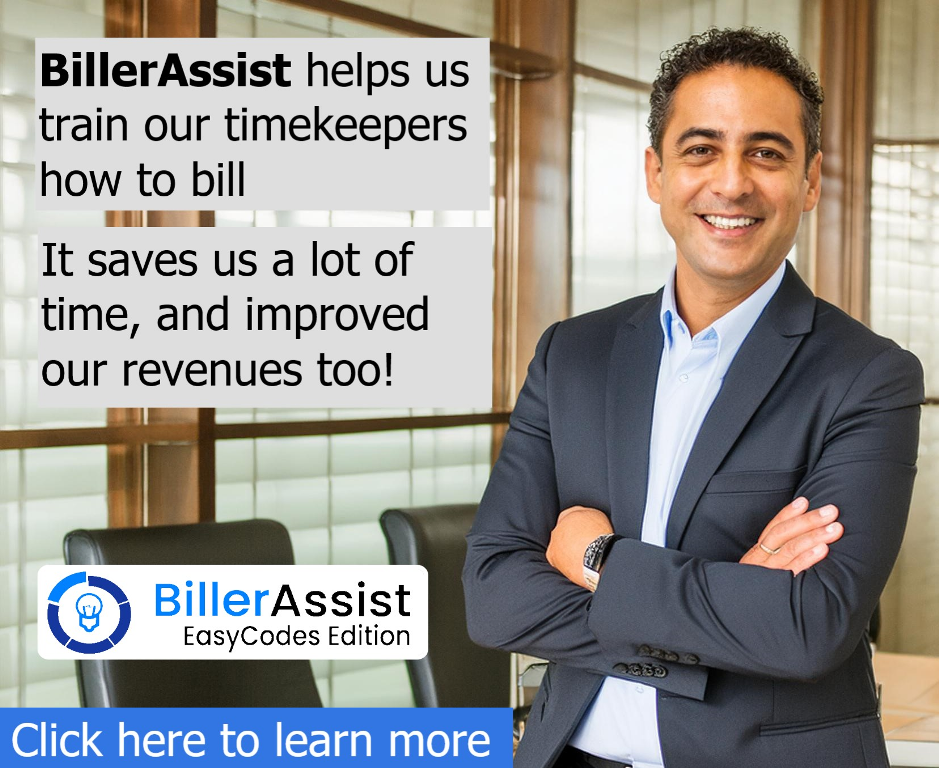How to Improve Law Firm Profitability in a Cost-Sensitive Environment
Several studies have shown that recent economic turmoil generally did not have as disastrous impact on law firm profitability as was seen in many other sectors.
The reports indicate that large USA law firms generally are seeing “mid-single-digit revenue growth”, while smaller firms generally are only experiencing single-digit declines.
However, the news is not all good, as belt-tightening practices learned in economic downturn of the Great Recession continue to haunt law firms.
In fact, the relatively small gains since then were not enough to significantly buck the trend toward controlling legal expenditures among clients.
According to a recent Georgetown University Law Center and Peer Monitor report, before the last financial crisis of the Great Recession, realization rates (i.e., the rate at which time worked is converted into time billed) and collection rates (i.e., the rate at which billed time is actually paid by the client) traditionally hovered around 92%. However, according to a recent Bloomberg Law Report, even Big Law practices saw these rates drop to less than 80%.
This isn’t just a problem for large firms either. Based on the results of a recent survey conducted by Clio, as reported in their Legal Trends Report, nearly a third of clients feel that hourly rates for legal work are overly expensive. What’s worse, the same report shows that over a third of clients don’t believe the services rendered are worth the cost being asked for them.
In the same vein, many clients are simply removing the middleman of outside counsel by bolstering their own in-house legal departments, as documented in a survey conducted by Altman Weil.
The survey notes the alarming statistic that “[m]ore than 85% of law firms finding that their strongest competition is coming from their clients.”
These drops in revenue are cause for concern. However, recent advancements in legal technology can help streamline law firm profitability and iron out problem areas that often contribute to losses in revenue.
Making cost-effective and easy to implement improvements can help drive up both realization and collection rates to levels that can improve law firm profitability.
Why Not Just Raise Prices?
Despite decreasing collection and realization rates, hourly billing rates remain on an incline. Not surprisingly, there is likely some causality at play with these two facts. When a business is seeing losses in revenue, the kneejerk reaction is often to raise prices.
Unfortunately, including for the legal profession, this can end up being a costly miscalculation.
First and foremost, it won’t work. Inflating hourly rates will lead to fewer clients actually paying the entirety of their bills, thereby tanking your collection rates and effectively canceling out any benefits of the price increase.
As noted above, clients have become even more cost-conscious. They are not only sensitive to impropriety in the form of overcharging; they are actively searching for it. If they find it, it’s likely to lead to invoice reductions or even a lost client.
Profitability will not be improved simply by raising prices. The more effective solution is to focus on improving realization rates, and cutting down on time spent on non-billable tasks, both of which can be done by using computer automation in the billing process.
Using AI-Assisted Billing
Law firms cannot afford to be haphazard in their time-keeping practices. Firms are only paid for the time they spend doing billable tasks. Any unrecorded time spent doing a billable task is money lost.
Nevertheless, bottle-necks in the billing process continue to cause costly problems for law firms.
For example, 450 small firms reported to LexisNexis that upwards of 40% of their billable time is lost due to woefully inefficient time-tracking procedures.
Similarly, according to a recent Legal Trends Report from Clio, out of a standard 8-hour work-day, the average smaller firm lawyer only spends as little as 2.5 hours engaged in billable tasks.
This only further highlights how important it is to not let even a second of that time fall through the cracks.
Creating accurate invoices without pouring excessive amounts of non-billable time into their completion is the balance that must be struck in order to optimize the billing process as a whole.
In an effort to assist in this matter, the American Bar Association provides 5 recommendations designed to maximize accuracy and efficiency.
- Be descriptive
- Avoid block billing
- Proofread time entries
- Track and enter your time daily
- Record all your time
As easy as this may seem on paper, in practice, efficiently allocating the resources necessary to juggle these plates without wasted time and while still attending to your billable responsibilities can be a tricky proposition.
This is where advances in legal tech come in.
Applications have been created that can automatically log your time. Instead of completing a task, going back and estimating how long you were working on it, then writing it down to eventually log in the future.
These time-tracking applications will log the time as you are completing the task, to a timesheet that can be accessed on pretty much any device with an internet connection.
That being said, these are simply tools. Optimum results will require optimum application.
The Importance of Data
If something is working for a business, it is in their best interest to keep doing it. If something is not working, it’s in their best interest to try something new. The most efficient way of determining these conclusions is by using data.
Making these kinds of decisions based on available data is the crux of data-driven solutions.
This translates to the legal realm in the form of resource allocation based on the analysis of previous billing data, cross-referenced with performance outcomes. If too much money was spent on a course of action that yielded unfavorable results in a previous matter, the data will reflect the need for a change. Moreover, this can be used to guide improvements in collections and realizations, as well as other areas of firm management.
Major, Lindsey & Africa recently produced an Industry Outlook report that explains, “more firms using analytics to predict trends and measure practice development by applying advanced analytical tools to their own billing and financial information.” Firms with the resources to do so are creating their own software tailored directly to their needs.
Regardless of the size of your firm, there is technology available that will automatically aggregate your firm’s data, and even help perform analysis using machine learning and artificial technology.
In recent years, research and development financing in the realm of automation has skyrocketed. This increased investment has already begun to bear fruit.
For example, Clio, a billing and practice management application company, recently added new features to its dashboard to effectively take the guesswork out of realization and collection rates entirely by tracking and displaying “how much billable work you’re doing, how much of that work gets billed, and how much of those invoices get collected on.”
Meanwhile, new applications can alert timekeepers in real time if a particular task is taking too much time and may not be paid by the client. Other applications allow for automated UTBMS/LEDES coding, sparing attorneys from an otherwise taxing and time-consuming manual process.
Such applications can be especially useful in catching and correcting discrepancies before a client sees them and uses them as grounds to contest an invoice. This same functionality helps provide data on potential problem areas that can be better managed in similar matters down the line.
Conclusion
Rarely is a kneejerk reaction the most prudent. This holds true in terms of raising prices to try to offset losses and improve profits. Not only will it not work, but it may even have serious adverse effects.
To improve realization and collection rates, law firms should improve and optimize their billing and practice management processes.
Although this could be a daunting task, the improvement is made considerably easier by new legal technology that makes use of machine learning and artificial intelligence to automate non-billable clerical tasks.
Implementing AI-assisted billing offers the additional benefit of accumulating and analyzing data that your firm can use to steer the ship towards ever more profitable and less wasteful waters.





